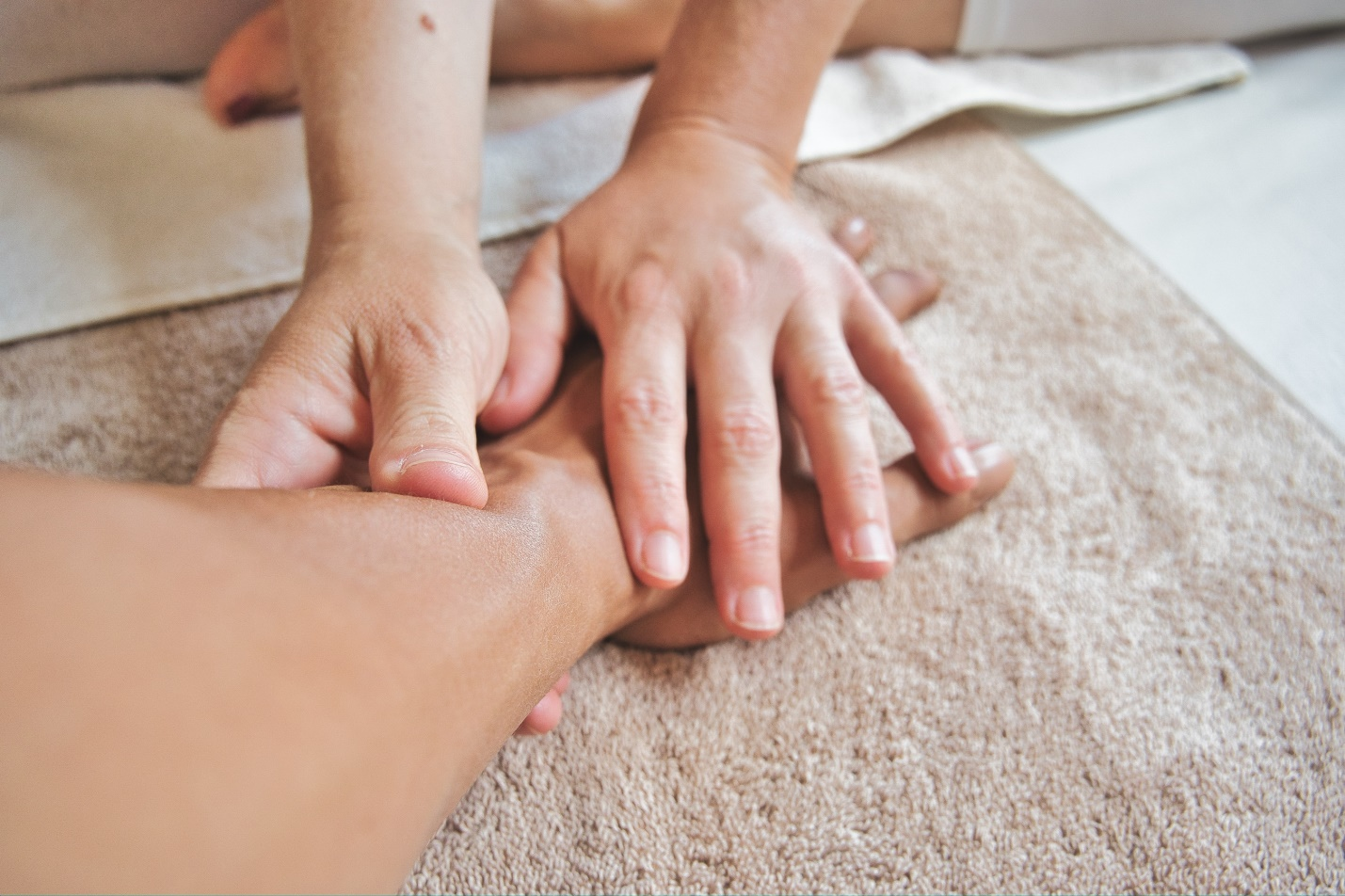Our modern daily life makes it easy for our bodies to get overworked and out of rhythm. Obtaining and maintaining homeostasis, or the delicate balance of our body’s internal systems, is critical for general health and well-being. While many variables contribute to achieving equilibrium, frequent massage treatment has emerged as a significant tool in assisting our bodies in finding their natural state of balance.
Asian Massage 2 Hotels offers the most relaxing massage experience to elevate your mood and overall well-being. We believe in quality over quantity, this is why we provide the best therapists for the best service. This post will delve into the physiological aspects and the numerous health benefits massage services offer in promoting homeostasis.
The Science Behind Homeostasis
Homeostasis, the body’s extraordinary ability to manage and maintain a steady internal environment, is critical to our physiological well-being. The body works to create homeostasis regardless of the constantly shifting external variables to ensure optimal performance across various organ systems. This delicate balance involves several vital processes supporting our general health and vigor, including temperature control, hormone production, immunological response, and many others.
Homeostasis is essential because it can protect the body from the harmful effects of external stimuli. Our bodies become experience various difficulties when this balance is disturbed, whether by environmental stresses, lifestyle factors, or underlying health issues. The effects of such imbalances can take many forms, from increased stress levels and weakened immune systems to chronic inflammation and a wide range of other health problems.
A crucial component of homeostasis is temperature regulation, which ensures that our bodies maintain a healthy internal temperature despite external environmental changes. Our thermoregulatory systems continuously strive to balance heat generation, heat loss, and body temperature so that our essential organs and biochemical processes run as smoothly as possible.
The creation and control of hormones are crucial for preserving homeostasis. Hormones act as messengers, facilitating communication between different organs and systems within the body. Homeostasis guarantees that physiological activities, including metabolism, development, reproduction, and stress response, occur in harmony by carefully regulating the release and balance of hormones.
The immune system plays an essential role in homeostasis by protecting the body against infections and preserving general health. It identifies and eliminates harmful substances while distinguishing them from the body’s healthy cells. An unbalanced immune response can lead to persistent inflammation, slowed healing, and increased infection susceptibility. This will result in an overall imbalance of the body.
Furthermore, homeostasis also affects other crucial systems, including the neurological, respiratory, digestive, and cardiovascular systems. The body ensures the appropriate function of these systems by carefully controlling heart rate, blood pressure, oxygen exchange, nutritional absorption, and neurotransmitter balance, ultimately contributing to general health and well-being.
In conclusion, homeostasis serves as a guiding principle for our bodies, enabling us to adapt and maintain stability in the face of external changes. The physiological system must be in a delicate balance to perform at its best, shielding us from the adverse effects of stress, inflammation, and other health problems. This way, we can prioritize and support the delicate equilibrium required for our bodies to thrive.

The Role of Massage in Restoring Homeostasis
Massage therapy acts as a catalyst in restoring and maintaining homeostasis by targeting different physiological processes within the body. Here’s how massage contributes to achieving balance:
1. Stress Reduction
Stress has become a common issue in our fast-paced and demanding environment that can upset the delicate homeostatic balance. Fortunately, massage treatment reduces stress and aids in reestablishing balance within the body. The body’s stress reaction reduces using various massage techniques, such as Asian massage, deep tissue massage, and aromatherapy.
The body releases endorphins during a massage, which are mood enhancers. These endorphins offset the harmful effects of stress by bringing forth feelings of relaxation, tranquility, and general well-being. Additionally, massage increases the synthesis of the neurotransmitters serotonin and dopamine, which regulate mood and foster emotions of happiness and satisfaction.
Additionally, massage treatment activates the parasympathetic nervous system. When the parasympathetic nervous system is activated, the heart rate and blood pressure fall, releasing muscular tension and slowing breathing. This physiological reaction fosters a state of profound relaxation and supports the body’s inherent ability to rebalance.
Furthermore, massage services such as in-room massage provide a caring and secure environment where people can decompress from their everyday stresses. Massage therapists’ gentle touches and skillful methods offer relaxation, allowing the body and mind to unwind.
Individuals who regularly receive massage can reduce their stress levels over time. Regular sessions offer the chance to address persistent stress patterns, lower overall physical stress, and promote long-term balance.

2. Improved Circulation
Massage therapy’s influence on circulation is one of the primary processes contributing to equilibrium. The methods used during massage sessions improve lymphatic and blood flow, facilitating the effective delivery of essential nutrients and oxygen while assisting in the elimination of metabolic waste products.
Rhythmic pressure and soft tissue manipulation during a massage increase blood vessel dilatation, boosting blood flow to the targeted regions. The tissues benefit from increased circulation because it provides nutrient-rich and freshly oxygenated blood. Adenosine triphosphate (ATP), the cell’s energy currency, is produced due to the increased oxygen supply, supporting cellular metabolism and helping maintain physiological equilibrium.
Additionally, massage promotes the movement of lymph, a clear fluid essential to the immune system. The lymphatic system collaborates with the circulatory system to eliminate waste, toxins, and excess fluid from the body. It helps to stimulate lymphatic circulation, facilitate lymph drainage, and reduce fluid retention and edema by using methods like petrissage and effleurage.
Furthermore, improved circulation not only delivers essential nutrients but also aids in the elimination of metabolic waste products such as lactic acid and carbon dioxide. Therefore, massage treatment assists in preventing the development of toxins that can upset the body’s equilibrium and cause inflammation and pain by removing these waste products from the body.
Additionally, the limited pressure applied during massage encourages vasodilation, which lowers blood pressure and enhances cardiovascular health. Massage treatment helps to maintain appropriate blood pressure levels by decreasing arterial stiffness and improving the flexibility of blood vessels, promoting cardiovascular homeostasis.
Individuals can get the benefits of enhanced circulation by indulging in massage services on a regular basis. Regular sessions improve lymphatic and blood flow, boosting the body’s ability to maintain homeostasis by properly supplying the resources for cellular activity and eliminating waste.

3. Regulation of the Nervous System
The nervous system’s importance in maintaining homeostasis cannot be overlooked. The autonomic nervous system, which regulates biological processes, including heart rate, breathing, digestion, and hormone release, is significantly impacted by massage treatment. Massage aids in regaining homeostasis and fostering general well-being by controlling the autonomic nervous system’s activity.
Massage techniques such as soft stroking, kneading, and stretching induce a relaxation response, stimulating the parasympathetic nervous system. This branch of the autonomic nervous system is responsible for the “rest and digest” response, promoting a state of deep relaxation, calmness, and restoration. The heart rate, blood pressure, and breathing all slow down and deepen when the parasympathetic nervous system is engaged. These physiological changes counterbalance the effects of the sympathetic nervous system, responsible for the “fight-or-flight” response, which is often over-activated due to chronic stress and imbalance.
Massage treatment aids in lowering the production of stress hormones like cortisol and adrenaline by evoking a relaxation response. Increased amounts of stress hormones can have a variety of negative impacts on the body, including high blood pressure, weakened immune systems, and irregular sleep patterns. Massage treatment helps the body maintain homeostasis and promotes general health by reducing the influence of stress hormones.
Neurotransmitters, the control and release of the chemical messengers that convey signals inside the neurological system, are also impacted by massage. During massage, serotonin levels rise, a neurotransmitter linked to mood control and feelings of well-being. This increase in serotonin levels contributes to a state of emotional equilibrium by reducing anxiety, depression, and mood disorders.
Massage treatment has also been proven to alter the release of neurotransmitters like norepinephrine and dopamine, which are crucial for motivation, reward, and attention. Massage treatment can stimulate mental clarity, improve concentration, and enhance cognitive performance by affecting the balance of these neurotransmitters.
Regular massage therapy allows the body to rebalance and recalibrate the autonomic nervous system. Massage therapy promotes the body’s natural regulatory processes and aids in homeostasis by inducing the parasympathetic response and altering neurotransmitter levels.
4. Reduction of Inflammation
A physiological reaction called inflammation is essential to the body’s defense against injury and infection. However, prolonged or severe inflammation can disturb homeostasis and be a factor in several medical conditions. Given that massage therapy inhibits the release of inflammatory cytokines, it is a crucial tool for reestablishing equilibrium and enhancing general well-being.
Kneading, friction, and compression are some massage techniques that can activate the body’s natural anti-inflammatory reactions. Massage decreases inflammation by improving blood and lymphatic circulation to the affected regions, which is one of its key processes. Increased circulation aids in delivering nutrients and immune cells to injured areas, promoting healing and lowering inflammation.
Massage also reduces the body’s inflammatory pathways’ activity by reducing pain. Additionally, the relaxation reaction brought on by massage aids in reducing the production of stress hormones like cortisol, which, when persistently increased, can worsen inflammation.
Studies have shown that massage treatment increases the production of anti-inflammatory cytokines like interleukin-10 while decreasing the levels of pro-inflammatory cytokines like interleukin-6 and tumor necrosis factor-alpha. By modulating the inflammatory response, this change in the cytokine balance aids in fostering a more favorable environment for healing and upholding homeostasis.
Additionally, massage therapy can target certain inflammatory disorders like arthritis or trauma to the musculoskeletal system. Massage can help reduce localized swelling, increase joint mobility, and relieve pain brought on by inflammatory conditions by employing focused pressure, stretching, and manipulation methods.
Regular massage treatments can help to reduce inflammation and reestablish equilibrium over time. Massage treatment helps to prevent the onset or progression of inflammatory illnesses and promotes general health and well-being.

5. Enhanced Immune Function
The immune system is a complex network of cells, tissues, and organs that defends the body against pathogens, infections, and diseases. It is critical to have a robust immune system in order to achieve homeostasis. Massage therapy is a helpful technique for strengthening our immune systems since it has been demonstrated to favorably influence immunity.
Massage treatment enhances immune cells’ generation and activity, improving the body’s immunological response. Research has shown that massage can increase the activity of natural killer cells, lymphocytes, and other immune cells in recognizing and eliminating pathogens and abnormal cells from the body. This immune-stimulating action strengthens the body’s resistance to infections and capacity to maintain homeostasis.
Additionally, it is proven that massage therapy increases the development of antibodies, which are essential for neutralizing viruses. It improves antibody synthesis, strengthening the body’s immune system and improving general health.
Regular massage services provide an opportunity to enhance immune function continuously. By strengthening the body’s immune response, reducing stress hormone levels, and aiding in detoxification, massage therapy helps to prevent illnesses and maintain overall health.
Asian Message 2 Hotels Offers the Ultimate Massage Experience in Las Vegas
If you are ever in Las Vegas looking for a massage service, Asian Message 2 Hotels is the right choice. We provide trained and beautiful massage therapists to help you relax. Our massage services in Las Vegas are available 24 hours, so you don’t have to worry about the time of the day. Pick up your phone and make a call at 702 970 0877 to get the best in room massage in Sin City.

